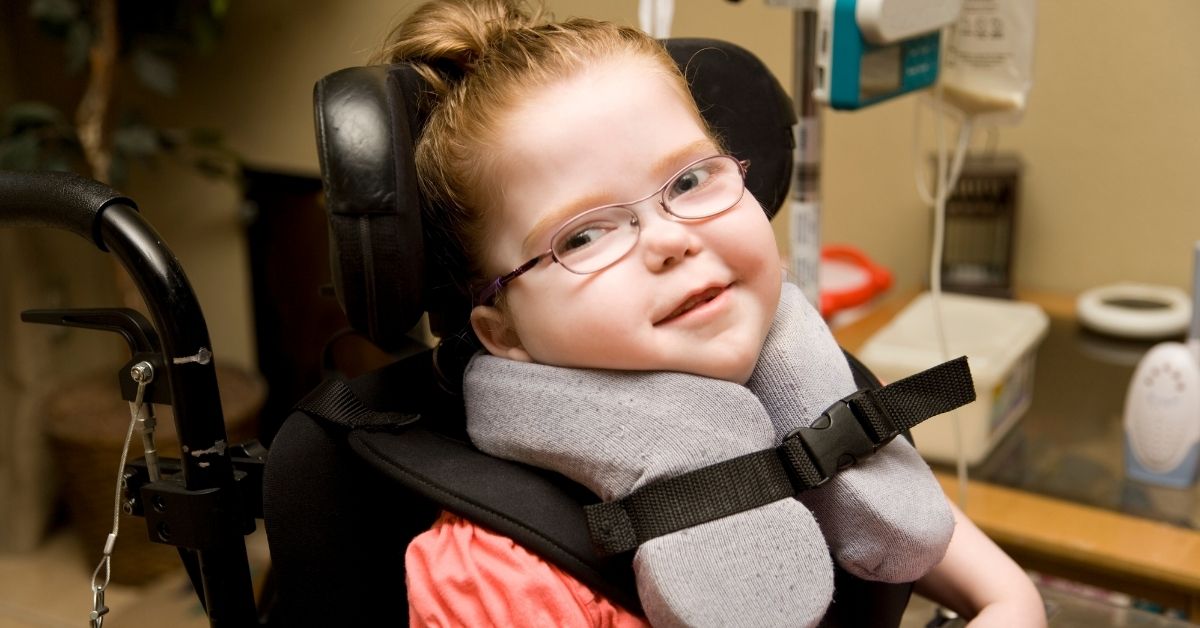
Author: Geetanjali Rathore, MD; University of Nebraska Medical Center, Children’s Hospital and Medical Center, Omaha, NE
Reviewed: July 2021
SUMMARY
Cerebral adrenoleukodystrophy (cerebral ALD, or CALD) is a genetic disorder. It is the childhood-onset form of ALD. ALD can begin in childhood or adulthood.
ALD leads to the accumulation of very-long-chain fatty acids in the brain and adrenal glands. The very-long-chain fatty acids (VLCFAs) cause damage to the myelin sheaths in the brain and spine. Myelin is the insulating membrane around nerve cells required for their normal functioning.
About 1 in 20,000 males are born with ALD. Females are typically only carriers. Females may have no or very mild symptoms.
Cerebral ALD is a progressive neurological disorder. Severe forms can eventually lead to:
- Difficulty walking
- Learning disability
- Inability to perform activities of daily living
- Seizures
JUMP TO
Disorder Overview
DESCRIPTION
Varieties of ALD
ALD can have onset in childhood or adulthood.
Childhood Form
The childhood form is known as cerebral ALD. Cerebral ALD is the more severe form of ALD. In cerebral ALD, expect:
- Symptoms beginning between 4 and 10 years of age
- Rapid progression
- Eventual symptoms to include:
- Difficulty walking
- Learning disability
- Inability to perform activities of daily living
- Seizures
Adult Form
The adult form is known as adrenomyeloneuropathy (AMN). This is a less severe form of ALD. Its progression is gradual, mostly affecting the ability to walk.
Coexisting Condition
Addison’s disease is caused by dysfunction of the adrenal gland. It is seen in almost all patients with ALD. Dark discoloration of the skin is the most prominent symptom of Addison’s.

SIGNS AND SYMPTOMS
Cerebral ALD typically presents in early childhood. Boys start showing symptoms between 4 and 10 years of age.
Early symptoms can be subtle. Cerebral ALD is often mistaken for ADHD (attention-deficit/hyperactivity disorder) or behavior problems.
Early symptoms include:
- Changes in behavior
- Changes in school performance
- Learning difficulties that can be mistaken for ADHD
- Difficulty with speech
- Difficulty with reading
- Difficulty understanding language
- Clumsiness
Symptoms that suggest a more severe condition include:
- Changes in vision
- Hearing loss
- More severe clumsiness
- Seizures
- Inability to swallow
As the disease progresses, children end up in a vegetative state. They lose all neurological function. They often pass away within 1 to 5 years of symptom onset.
CAUSES
Cerebral ALD is caused by a mutation in the ABCD1 gene. This gene helps break down very-long-chain fatty acids (VLCFAs). Because of the mutation, VLCFAs do not properly break down. They instead accumulate in the body’s tissues.
Cerebral ALD is also called an X-linked condition. This is because it results from a problem on the X-chromosome. Females have two X-chromosomes. If a female inherits one faulty gene, she will still have one normal gene. Females are often carriers. They will have no or very mild symptoms for this reason. However, males only have one X-chromosome. Therefore, the gene mutation causes more severe disease in males.
Cerebral ALD can be inherited from one or both parents. A male carrier should not be able to pass on this gene unless he is very mildly affected. This is not common. With each pregnancy, a female carrier (one normal X chromosome and one abnormal chromosome with the ABCD1 gene mutation) has a 50% chance of passing the abnormal gene to their child. Specifically, a female carrier has one X chromosome with an abnormal gene. Therefore, if the fetus/baby is a boy, he has a 50% chance of having ALD. A girl baby (with two X chromosomes—one from the father and one from the mother) would have a 50% chance of being a carrier of the gene for cerebral ALD.
Prevention
There is no way to prevent cerebral ALD. If there is family history of ALD, genetic testing and counselling can be provided by a doctor.

LABORATORY INVESTIGATIONS
Babies born with ALD have normal neurology at birth. However, early diagnosis in boys is critical. It can lead to life-saving treatment.
Doctors may suspect ALD based on:
- Family history
- Progressive neurological symptoms
When ALD is suspected, doctors order the following tests:
VLCFA testing
Steroid testing
Brain scans
Several states in the United States test VLCFA levels at birth. This is part of a routine newborn screening. If needed, therapy can then be initiated very early.
TREATMENT AND THERAPIES
Currently there is no cure for cerebral ALD. However, there are treatments that can slow progression and relieve symptoms.
Stem-cell transplants
Stem–cell transplants are the only option available for slowing down disease progression. In this procedure, the child with cerebral ALD receives blood stem cells from a matched donor. The cells from the donor can produce the protein that the child cannot. Stem–cell transplants are only recommended in the early stages of cerebral ALD. They are not recommended for boys whose symptoms are already severe. They can cause rapid progression of the disease in some cases. After a transplant, patients’ immune systems must be suppressed, so that the stem-cell transplant is not rejected. This puts them at risk for serious infection. Stem-cell transplants are also known as bone-marrow transplants.
Adrenal hormone replacement
Medication
Physical therapy and school modifications
Gene therapy
Gene therapy is currently being studied in a clinical trial. It is a potential treatment for cerebral ALD. In this clinical trial, a noninfectious virus is used to introduce a normal ABCD1 gene into the patient’s cells. The cells carrying the new gene can break down the VLCFAs. This might prevent the serious symptoms of cerebral ALD.

OUTLOOK
It is not possible to outgrow cerebral ALD. Cerebral ALD causes progressive degeneration of the nervous system. It can lead to death within 5 to 10 years of diagnosis unless stem-cell transplantation is performed early. (Adult-onset ALD, on the other hand, can gradually progress over several decades.)
Short term studies have shown that early stem-cell transplantation is important. Early transplantation can mean:
- Improved survival
- Better-preserved neurological function
If untreated or when diagnosis is delayed, cerebral ALD is rapidly progressive. In these cases, within 1 to 5 years of diagnosis, children with ALD:
- Lose all neurological function
- Lose the ability to function independently
Ongoing Interventions
Several interventions may be helpful to those with cerebral ALD:
Individualized educational plans and therapies at school
Further support
Exercise and physical therapy
RELATED DISORDERS
There are more than 50 other rare genetic leukodystrophy disorders. They all cause damage to the myelin in the brain and spinal cord. They result from different gene mutations than cerebral ALD. However, they can have similar symptoms.
Examples include:
- Krabbe’s disease
- Metachromatic leukodystrophy
- Pelizaeus-Merzbacher disease
- Refsums disease
- Alexander disease
- Canavan disease
Resources
The ALD Alliance helps families across the United States that are newly diagnosed with adrenoleukodystrophy (ALD) by giving them the resources they need to fight this rare and devastating disease. This fight begins by making sure every baby born in the United States is tested at birth for ALD. The ALD Alliance was established to address the need for information and newborn screening with respect to adrenoleukodystrophy. In addition, ALD Alliance strives to support families by:
- Advocating for ALD newborn screening in every state.
- Gathering and providing current, functional information and providing financial support to families of children with ALD.
- Funding research efforts that will identify new treatments, therapies and ultimately, a cure for ALD.
- Raising awareness of ALD and increasing the probability of early detection and treatment.
An additional resource is the online version of the “Parents Guide to ALD”. It contains the disease definition, explanation of various phenotypes, monitoring protocols, treatment options, and a list of ALD experts. It is considered the roadmap after receiving the diagnosis of ALD.
The Stop ALD Foundation
The Stop ALD Foundation is focused on developing new knowledge and new therapies for adrenoleukodystrophy (ALD). They also work to increase the screening of newborns for ALD. In addition, Stop ALD educates the medical profession and the public about ALD by raising awareness in order to improve detection, diagnosis, and treatment. They also provide resources to families affected by the condition.
Hunter’s Hope
Hunter’s Hope Foundation was established to address the acute need for information and research with respect to Krabbe disease and related leukodystrophies.
The mission is four-fold:
- To broaden public awareness of Krabbe disease and other leukodystrophies thus increasing the probability of early detection and treatment.
- To gather and provide current, functional information and service linkages to families of children with leukodystrophies.
- To fund research efforts that will identify new treatments, therapies and ultimately, a cure for Krabbe disease and other leukodystrophies.
- To establish an alliance of hope that will nourish, affirm and confront the urgent need for medical, financial and emotional support of family members and those afflicted with leukodystrophies.
United Leukodystrophy Foundation
The United Leukodystrophy Foundation (ULF) is a volunteer-based health organization dedicated to providing patients and their families with information about adrenoleukodystrophy and other leukodystrophies. The ULF provides assistance in identifying sources of medical care, social services, and genetic counseling. In addition, the ULF works to establish a communication network among families; as well as increases public awareness and acts as an information source for health care providers by promoting and supporting research into causes, treatments, and prevention of the leukodystrophies.

Child Neurology Foundation (CNF) solicits resources from the community to be included on this webpage through an application process. CNF reserves the right to remove entities at any time if information is deemed inappropriate or inconsistent with the mission, vision, and values of CNF.
Research
ClinicalTrials.gov for Cerebral Adrenoleukodystrophy are clinical trials that are recruiting or will be recruiting. Updates are made daily, so you are encouraged to check back frequently.
ClinicalTrials.gov is a database of privately and publicly funded clinical studies conducted around the world. This is a resource provided by the U.S. National Library of Medicine (NLM), which is an institute within the National Institutes of Health (NIH). Listing a study does not mean it has been evaluated by the U.S. Federal Government. Please read the NLM disclaimer for details.
Before participating in a study, you are encouraged to talk to your health care provider and learn about the risks and potential benefits.
Family Stories
The United Leukodystrophy Foundation shares stories to raise awareness and to let families connect and know they are not alone after a diagnosis of leukodystrophy. See the Not Giving Up page to read about others and share your story.
Families affected by leukodystrophies share how the Leukodystrophy Care Network has impacted their lives. Leukodystrophy Family Stories of Hope can be found on the Hunter’s Hope website.
The ALD Alliance shares a few stories from families who are dealing with a family member who has Adrenoleukodystrophy on the ALD Families page. If you are an ALD family, you can join the ALD Family Registry.
The information in the CNF Child Neurology Disorder Directory is not intended to provide diagnosis, treatment, or medical advice and should not be considered a substitute for advice from a healthcare professional. Content provided is for informational purposes only. CNF is not responsible for actions taken based on the information included on this webpage. Please consult with a physician or other healthcare professional regarding any medical or health related diagnosis or treatment options.
References
NINDS Adrenoleukodystrophy information page.
Adrenoleukodystrophy Information Page | National Institute of Neurological Disorders and Stroke (nih.gov)
NORD X-linked Adrenoleukodystrophy information page.
X-Linked Adrenoleukodystrophy – NORD (National Organization for Rare Disorders) (rarediseases.org)
NCATS X-linked Adrenoleukodystrophy information page.
X-linked adrenoleukodystrophy | Genetic and Rare Diseases Information Center (GARD) – an NCATS Program (nih.gov)
